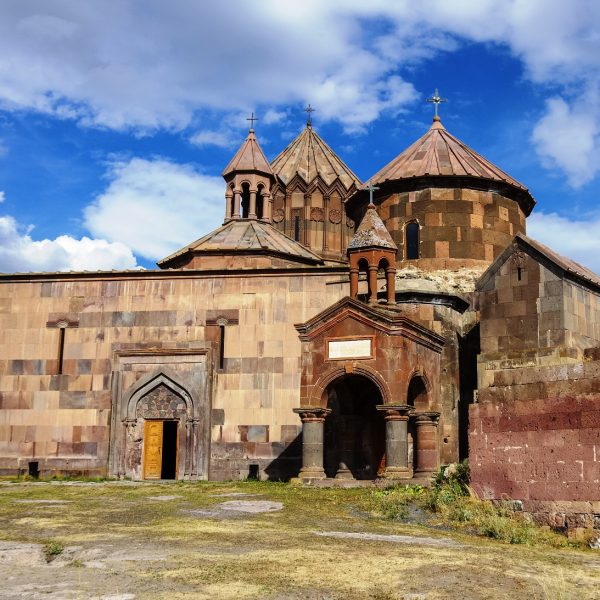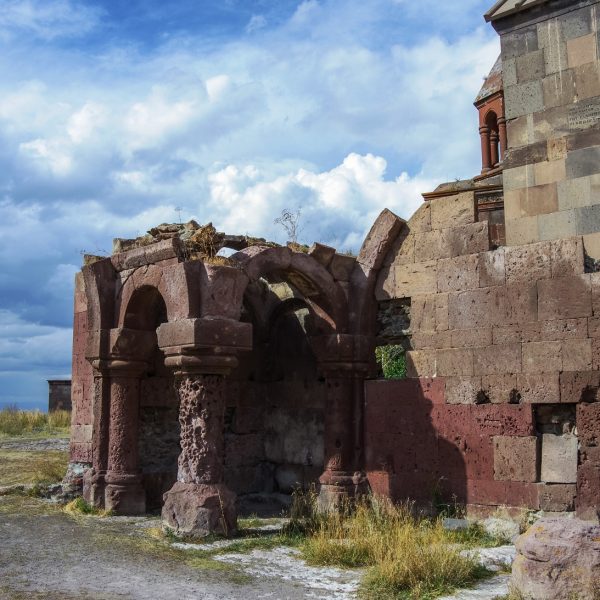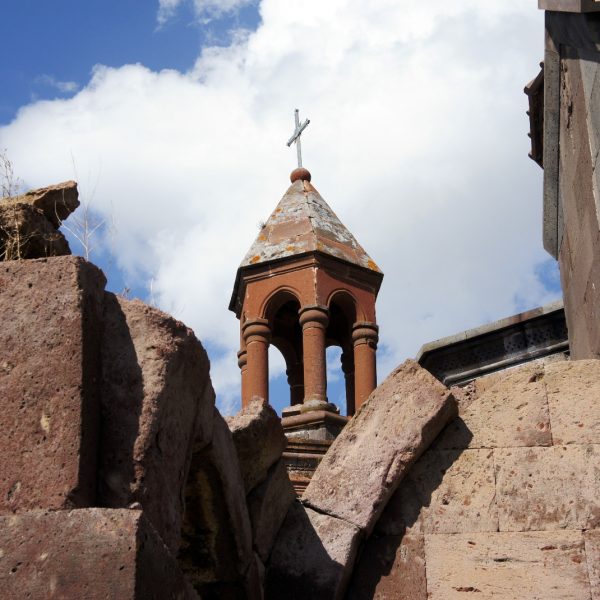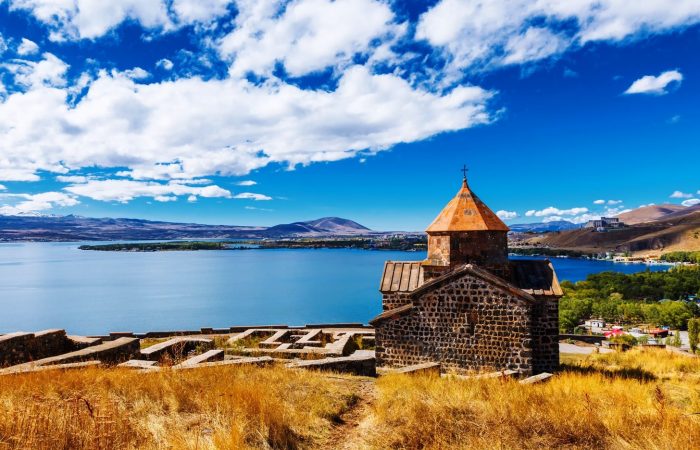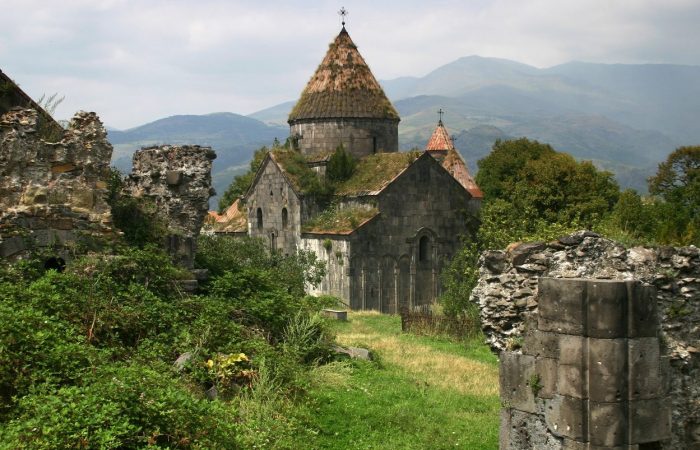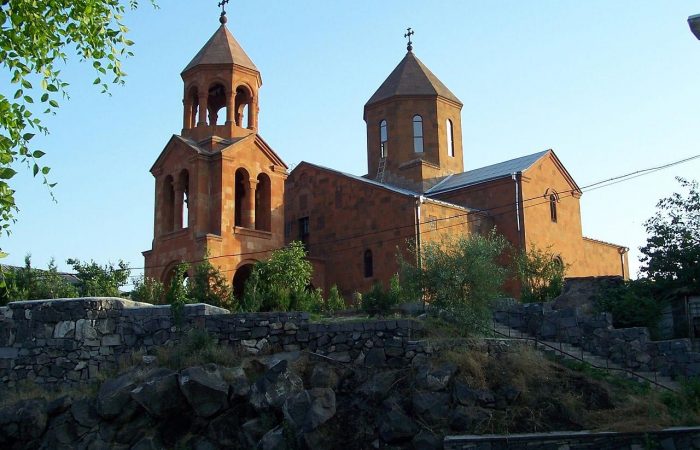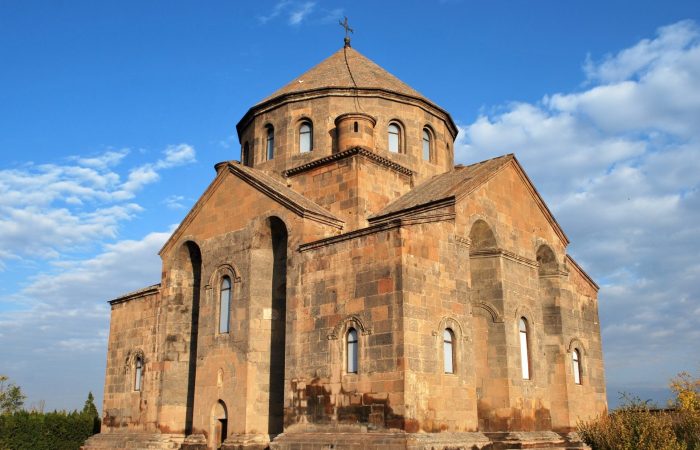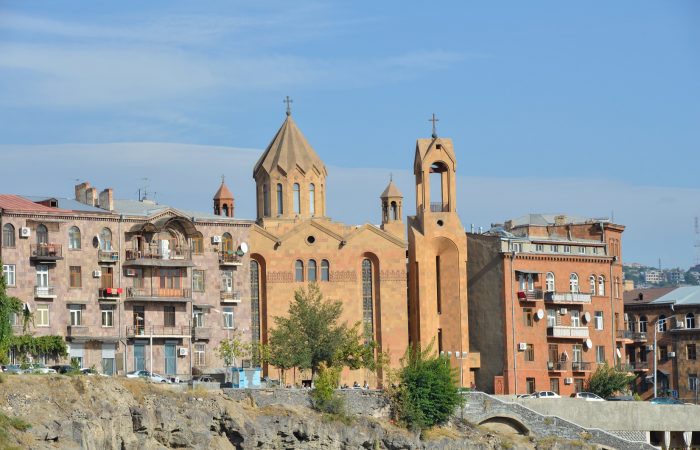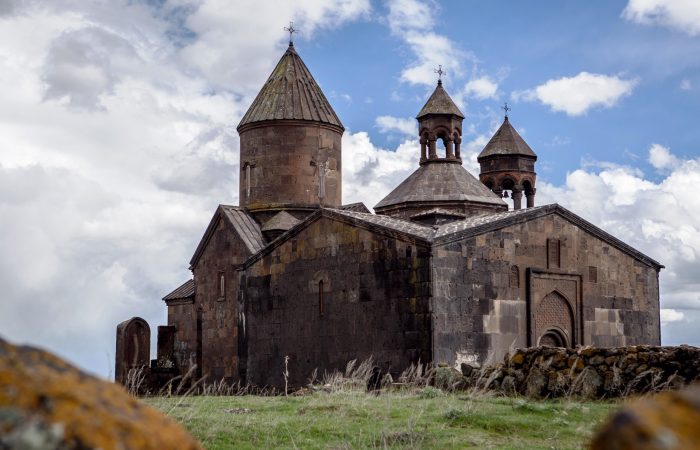The monastery is very well preserved; the reason is because it has undergone a huge number of restorations during the years of its existence. A lot of modifications have been inflicted on the church, so, it can be insisted that the original model of the church, which Zakaryan brothers are holding on one of the bas-reliefs, has been considerably changed. It has become richer and richer.
Not too far away from the monastery, a small Hermitage Chapel stands. It dates back to the 5th century and has, unfortunately, survived in ruins.
Harichavank monastery has been one of the key centers of Armenian spiritual, cultural, and scientific centers for centuries.
Harichavank Monastery: Architecture
The architecture is very similar to St. Hovhannes church of Mastara village. This is the reason why the oldest church of Harichavank Monastery is considered to be Mastara-style.
The Cathedral is one of the best preserved ones in Armenia. It is cruciform and displays a magnificent cupola that served as an original for construction of churches like Gandzasar. This is why, unlike St. Gregory the Illuminator Church, the Cathedral is considered to be a Gandzasar-style church. The interior decorations mainly include themes of roses, doves, a sundial, and so on.
Zakare Zakaryan apparently liked Harichavank in a special way, as he himself decorated the cathedral for the first time and continued to make donations for a long time.
Two additional gavits were added to the building in the 13th century. The gavit is, of course, smaller in size not to compete with the greatness of the main cathedral. The two churches are connected to each other by a porch that was built by Prince Vahram Hechoup in 1224.
The monastery falls on the northern slope of Aragats Mountain, which is the highest peak of Armenia. This can be a good root to go hiking.
Harichavank Monastery: School and Scriptorium
The school and the scriptorium of Harichavank were particularly famous. It is worth mentioning that the school of the monastery works since the 7th century, in other words, since the construction of the first church.
The school and the scriptorium were a unique storage of Armenian manuscripts and artworks. An example of an ancient manuscript copied in Harichavank Monastery is the Bible, or more specifically, only one page. It dates back to 1209 and was apparently copied by Margare. Generally, the majority of documents and pictures retrieved from this monastery have biblical themes and topics.
One of the most famous alumni of Harichavank School is Avetik Isahakyan, a famous writer and thinker. This is already a high grade to the quality of education received here.
Harichavank Monastery: Modifications
Many princes and officials have paid a special attention to the monastery, but there was one turning point in its history. The village of Harich was made the summer residence of the Armenian Catholicos in 1850.
This has resulted in the beginning of a new era of constructions. The standards of conveniences had to be raised. The new building usually possessed either one or two floors. Among them are the office of Catholicos, a kitchen and a bakery, a new school, and a hostel for visiting monks. The gardens and parks around the monastery were refreshed. A new belfry was also built in 1886.
Harichavank Monastery: Excavations
As excavation projects show all around Armenia, it’s enough to dig just a little, and something precious will be found. This site hosted excavations in 1966, the discoveries of which have proven that Harich was founded in the 2nd century BC. Some dwellings were uncovered; they contained fireplaces made of stone, work tools, jewelry, and household items. Moreover, some ruins have shown that the village was once an important fortress, surrounded by protective walls.
Some mausoleums have also been found. Despite their age, each one of them is pretty different in style. Some of them are octagonal, others are circular, and so on.
Some excavations show that the main population lived in the fortress before the monastery was built. It can be supposed that the construction served as a motivation for people to found the village of Harich.
Even today, a small part of the walls that used to surround the monastery are immediately noticed in the eastern part of the complex.
Harichavank Monastery: Company of Harichavank Monastery
Although the monastery is already very famous, efforts to preserve it for future generations and to develop it even more have never stopped. A group of young students from Gyumri formed the “Company of Harichavank Monastery” in 1850. The main purpose of this company is to ensure the progress of the monastery today and in the future, restore some of the buildings, and bring back the fame of the monastery as a first-class educational institution.
1850s were the time when the Theological Academy of Harich was opened. Together with the Vazgenian Theological Academy, the school at Harichavank provides some of the smartest students for Gevorgian Seminary of Ejmiatsin, the country, and the Armenian Apostolic Church.
After a number of successes the company stopped its activities in 1915.
This monastery is also one of the most beautiful sacred sites of Armenia. The gentle colorings of the stone almost create an illusion under the afternoon sun. The monastery is currently being restored once again. It’s one of the must-see churches in Armenia that receives admired tourists all year round.
After some time it will be ready to open the best scenes of its beauty and reign over the most beautiful churches of Armenia for long and productive centuries.

